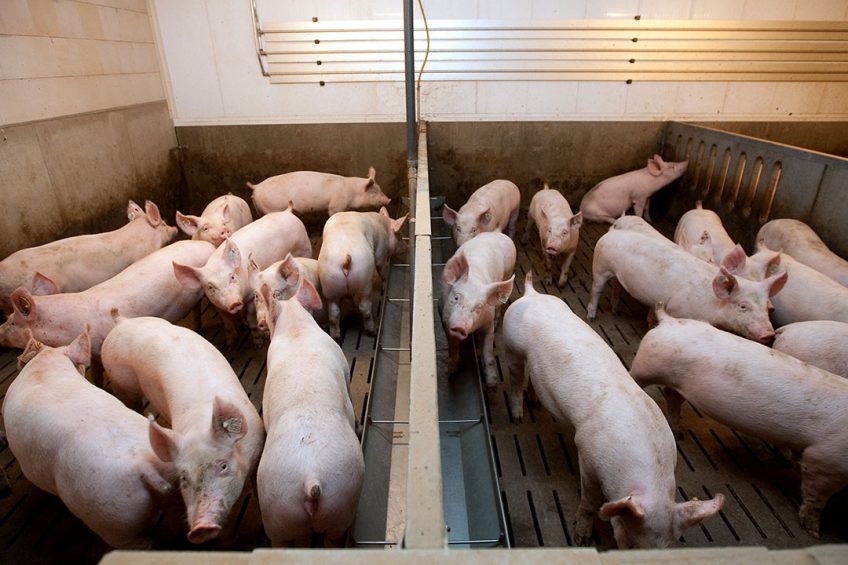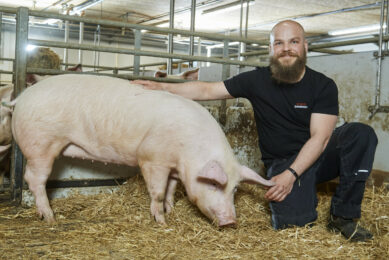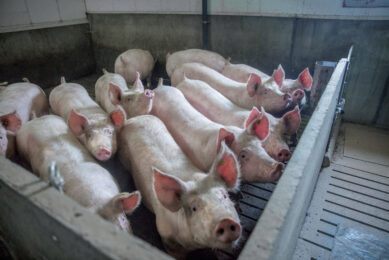Predicting the exact slaughter age in pigs

Is it possible to determine in advance the slaughter age of pigs when it is 120 kg? Yes, to a good extent that is possible, using machine learning technology, researchers from the Netherlands found out.
The researchers, attached to the University of Groningen, Wageningen University & Research and Topigs Norsvin, shared their results in the peer-reviewed Journal of Animal Science. Their research was based on data of almost 33,000 purebred Large White pigs.
Pig weight and growth rate
In their article, the researchers wrote: “The weight of a pig and the rate of its growth are key elements in pig production. In particular, predicting future growth is extremely useful, since it can help in determining feed costs, pen space requirements, and the age at which a pig reaches a desired slaughter weight.
“However, making these predictions is challenging, due to the natural variation in how individual pigs grow, and the different causes of this variation.”
Phenotypic data, pedigree and estimated breeding values
Apart from machine learning, the scientists used the variable importance score from the machine learning to quantify the importance of different types of input data for that prediction. Breeding company Topigs Norsvin provided data of 32,979 purebred Large White pigs. The data consisted of phenotypic data, estimated breeding values (EBVs), along with pedigree and pedigree-genetic relationships.
The team also presented a 2-step data reduction procedure, based on random projections (RPs) and principal component analysis (PCA), to extract features from the pedigree and genetic similarity matrices for use as inputs in the prediction models.
Phenotypic features were most effective
The researchers stated that the results showed that relevant phenotypic features were the most effective in predicting the output (age at 120 kg), explaining approximately 62% of its variance.
Estimated breeding value, pedigree, or pedigree-genetic features interchangeably explain 2% of additional variance when added to the phenotypic features, while explaining, respectively, 38%, 39%, and 34% of the variance when used separately.
The research was authored by Ahmad Alsahaf, George Azzopardi and Nicolai Petkov, University of Groningen, the Netherlands; Bart Ducro, Roel F. Veerkamp, University of Wageningen, the Netherlands; and Egiel Hanenberg, Topigs Norsvin, the Netherlands.











